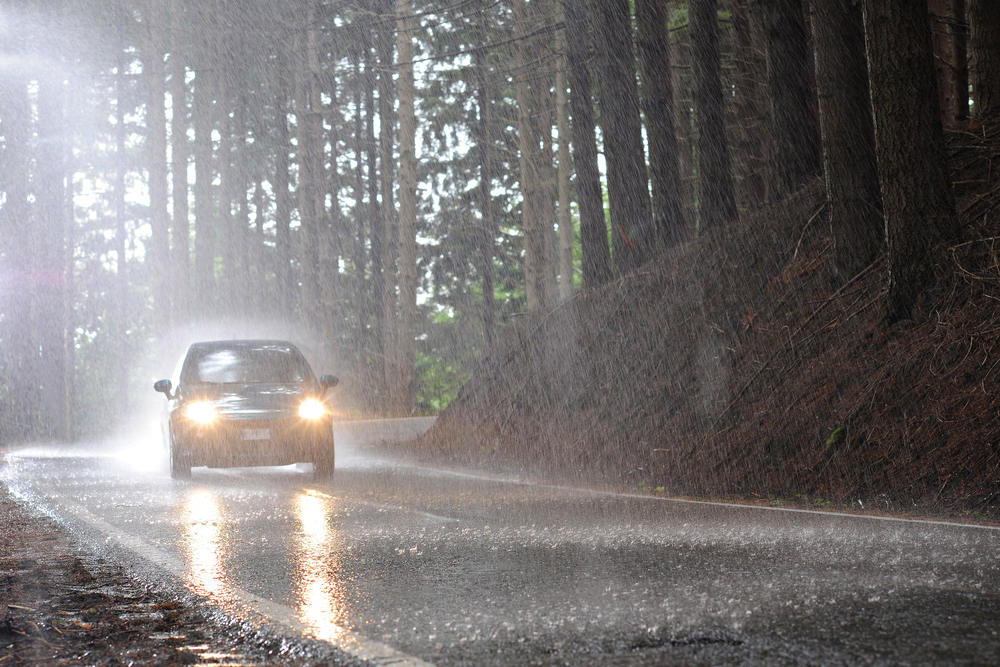Driving in the rain is more dangerous than driving during other conditions because you have to worry about other motorists who may not be paying attention, poor visibility, and slippery roads. So when it’s wet out, it’s important to be safe by paying attention and keeping yourself aware of what is going on around you at all times. You should always review your auto’s handbook before traveling and make sure you have any necessary details alike as an umbrella or a water repellant top. There’s also a lot to know about the way rain affects visibility on the road, so it’s important to know what these are before driving.
It’s important to note that stormy weather can make driving difficult for both manual and auto automobiles. But with these tips, you will be capable to keep a level head and stay safe behind the wheel during tempestuous rainfall. Do not worry-it’s all easy enough to remember and will get you through just about any rainfall!
Check your windshield wipers
Visibility in the rain can be extremely limited and indeed treacherous. Drops on your windshield will reduce visibility because they can bounce light off the windshield and make it difficult to see. The wet asphalt on the road can also produce this reflection when hit by light, which makes visibility even worse. When driving in the rain you ’ll need to use your wipers, but not all wipers are created equal. Your wiper blades should be changed every 6 months at a minimum and replaced as soon as necessary to assure you get a clear view of the road ahead of you. Make sure you have some window cleanser in your automobile as well-you will need it to keep the windows clear of road smut after the rain has passed.
Ensure that all of your lights are working appropriately
You should also make sure your headlights work appropriately so that you can see in the rain, and other automobiles on the road can see you. It’s important to replace the headlight bulbs when necessary and to keep them clean so that they shine brightly on the pavement in front of you. You should also keep your windshield clean in and out in case of rain. Check that your turn signals and brake lights are working before driving on any wet roads. However, they could become damaged while you are out on the road, making you an indeed bigger hazard to other motorists, If they are not. Any dirt or smut on your windshield will cause unnecessary reflection and make visibility more delicate. Incipiently, if possible, try to keep your windows rolled down a bit, this will help with visibility and allow for a quicker drying time after a stormy trip.
Keep your tires as full as possible
This is to avoid hydroplaning. Hydroplaning is when a auto tire comes into contact with further water than it can disperse. The water pressure in front of the wheel pushes the water under the wheel. This reduces tire and road contact and increases the chances of an accident. Driving on low tire pressure will not give you that important control over your vehicle, so keep those tires pumped up before hitting the road in heavy rain.
Be aware of how fog works
Sometimes when it rains, fog can roll in before or after the rain begins to fall. This is because rain tends to make the air cooler, which can cause fog to develop as it forms. The bad thing about foggy conditions is that it can be difficult to see other vehicles, so there is more room for error when driving.
Try to keep your speed low
You should drive slower, especially on wet roads, where the moisture makes them even unsafe for any type of fast driving. When driving during inclement weather, stay in the lane that has the most traffic and make sure that you maintain a speed of about 20 miles per hour (30km/h), unless you’re passing another car. If you get in an accident or a wreck, don’t panic. Remember that you’re insured. Focusing on each other’s cars while driving side by side is easy because most drivers will see you before they see anything else. If someone cuts you off, honk your horn loudly so they know you’re there and alert them that their car has been cut off from the lane they are trying to overtake.
Watch out for the occasionally hidden puddles
Some rainstorms can produce a lot of small, hidden puddles that drivers may not suspect. Make sure you watch out for these and avoid making contact with any of them. They can cause some serious damage to your vehicle if they get big enough.
Do not use cruise control while driving in the rain
In wet conditions, cruise control systems will have less effect than normal, which could increase your chances of having an accident due to the lack of proper driver focus. On low traction surfaces, cruise control increases the chances of hydroplaning and may cause the vehicle to skid or even spin.
Manual transmission cars can have problems when they have an oil or water leak, but you don’t need to change your oil or get it checked if it’s under warranty. If there’s a mechanical problem, go to your nearest dealership where they’ll fix it.
Rain is one of the leading causes of accidents in the United States, which can be both dangerous and hard to avoid. Statistics show that every year on average 875 people are killed by rain-related accidents and 2.6 million are injured as a result of these accidents. Drivers usually encounter rain during their commute to work, while driving on highways, or while waiting at lights, so it’s important to know how rain affects your visibility on the road. The key is to stay focused on the road and be cautious so that nothing bad happens to you or your car.



